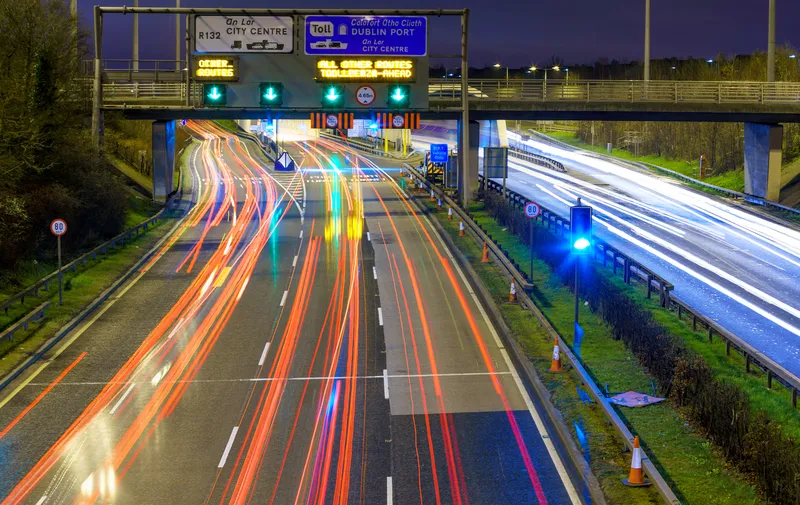The Midlands got a boost today with the launch of the latest stretch of smart motorway, making greater use of technology on the M6 near Birmingham, bringing improved journeys and less congestion.
Opening the hard shoulder to traffic during the busiest times between junctions 5 and 8 on the M6 will improve journey times, especially around Birmingham and marks a milestone for the Highways Agency, after several years of investment in this section of the M6. This ten mile stretch means the benefits can now b
April 16, 2014
Read time: 3 mins
The Midlands got a boost today with the launch of the latest stretch of smart motorway, making greater use of technology on the M6 near Birmingham, bringing improved journeys and less congestion.
Opening the hard shoulder to traffic during the busiest times between junctions 5 and 8 on the M6 will improve journey times, especially around Birmingham and marks a milestone for the503 Highways Agency, after several years of investment in this section of the M6. This ten mile stretch means the benefits can now be felt continuously from junctions 4 to 10.
The smart motorway was delivered within budget working closely with contractor Carillion. More than 1,700 people have worked on the scheme since construction began in April 2012, almost 30 per cent of whom were from the local area. Materials, such as the concrete, surfacing materials, communications ducts and topsoil have also been sourced locally.
The project included installation of 21 new gantries, refurbishing three existing gantries, resurfacing over 100,000 square metres of carriageway, laying more than 78 miles of cabling and constructing six emergency refuge areas.
The improvements use a range of technologies and operational systems to reduce congestion and smooth the flow of traffic. During busy periods, traffic officers will set overhead message signs to inform drivers they can use the hard shoulder as an extra lane and at what speed to drive.
Highways Agency project manager Rob Edwards said: “Drivers will reap the benefit of the government investing more than US$186 million on this stretch of the M6, with improved journeys and a boost for the economy. The move to smart motorways began in the Midlands on the M42 in 2006. This scheme brings the latest technology to the M6, despite the difficult engineering challenges we faced with the motorway being elevated. More than 160,000 road users stand to benefit each day, now we can open the hard shoulder during the busiest times”.
Neil Taylor, operations manager at the West Midlands Regional Control Centre said: “The information displayed along the motorway has been carefully designed to be intuitive, so drivers should stay alert and follow the information they see. They should only use the hard shoulder when there is a speed limit displayed above it. If there isn’t a speed limit, or there’s a red X over it, then it’s for emergency use only.”
Opening the hard shoulder to traffic during the busiest times between junctions 5 and 8 on the M6 will improve journey times, especially around Birmingham and marks a milestone for the
The smart motorway was delivered within budget working closely with contractor Carillion. More than 1,700 people have worked on the scheme since construction began in April 2012, almost 30 per cent of whom were from the local area. Materials, such as the concrete, surfacing materials, communications ducts and topsoil have also been sourced locally.
The project included installation of 21 new gantries, refurbishing three existing gantries, resurfacing over 100,000 square metres of carriageway, laying more than 78 miles of cabling and constructing six emergency refuge areas.
The improvements use a range of technologies and operational systems to reduce congestion and smooth the flow of traffic. During busy periods, traffic officers will set overhead message signs to inform drivers they can use the hard shoulder as an extra lane and at what speed to drive.
Highways Agency project manager Rob Edwards said: “Drivers will reap the benefit of the government investing more than US$186 million on this stretch of the M6, with improved journeys and a boost for the economy. The move to smart motorways began in the Midlands on the M42 in 2006. This scheme brings the latest technology to the M6, despite the difficult engineering challenges we faced with the motorway being elevated. More than 160,000 road users stand to benefit each day, now we can open the hard shoulder during the busiest times”.
Neil Taylor, operations manager at the West Midlands Regional Control Centre said: “The information displayed along the motorway has been carefully designed to be intuitive, so drivers should stay alert and follow the information they see. They should only use the hard shoulder when there is a speed limit displayed above it. If there isn’t a speed limit, or there’s a red X over it, then it’s for emergency use only.”










